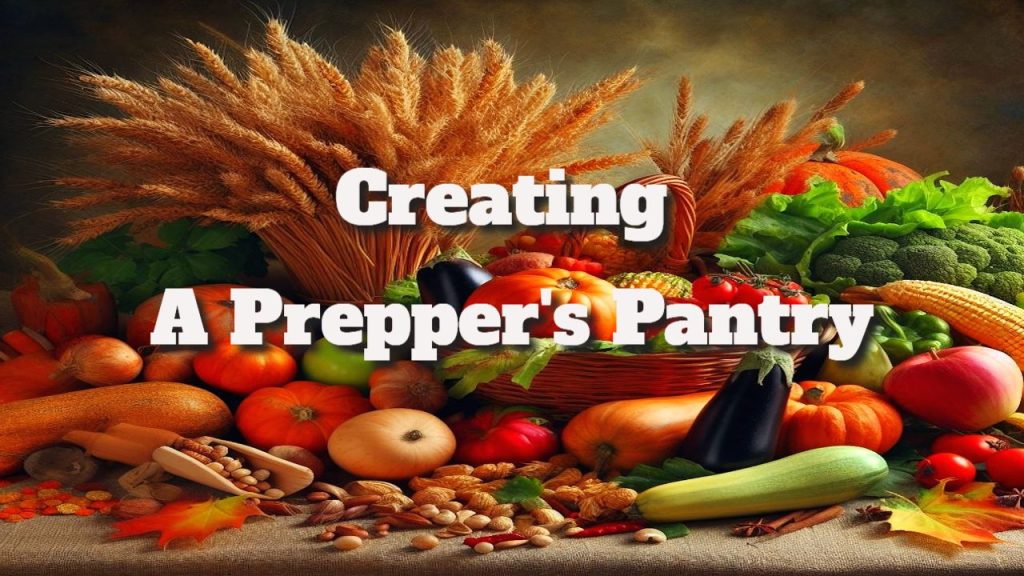Essential Strategies for Designing a High-Performance Prepper’s Pantry
The placement of your pantry plays a pivotal role in preserving the quality, integrity, and longevity of your food supplies. It is paramount to establish an organization system that promotes optimal storage conditions to keep your food items fresh and prevent spoilage. Environments characterized by high humidity and elevated temperatures create ideal conditions for bacteria and fungi, which can accelerate the deterioration of your food. Furthermore, exposure to light can instigate photodegradation, a process that damages food and its packaging, leading to a reduction in essential nutrients, vitamins, and even the appealing colors of your supplies. To mitigate these risks, it is advisable to implement thick curtains or window shutters to effectively block direct sunlight. By creating a cool, dark environment in your pantry, you can significantly enhance the preservation of your food items, thereby extending their shelf life and maintaining their quality for future culinary endeavors.
In addition to light exposure, selecting a pantry location that experiences minimal temperature fluctuations is crucial for preserving the integrity of your food supplies. Constant temperature changes can be equally detrimental to food preservation as exposure to light and heat. Therefore, it is best to avoid placing your pantry in areas that are prone to temperature swings, such as garages, where conditions can vary dramatically. Many seasoned preppers opt for the cooler parts of their homes, such as basements or attics, which not only help maintain a stable temperature but also provide added protection during unforeseen power outages. Furthermore, investing in quality shelving can greatly improve the organization within your pantry, making it easier to locate and access supplies when needed. By implementing these straightforward yet effective strategies, you can create a highly efficient pantry system that caters to your long-term food storage requirements and enhances your overall preparedness.
Innovative Space-Efficient Solutions for Food Storage in Limited Areas
If you find yourself in a living situation lacking a basement, attic, or sufficient storage space, you may be questioning how to effectively store your food supplies without compromising on quality. Many preppers face space constraints, but with a touch of creativity and resourcefulness, nearly any unused area in your home can be transformed into a highly functional food storage solution. For example, consider utilizing the cupboard under your stairs, an old wardrobe, or even a crawl space if you have access to one. These often-overlooked spaces can serve as excellent storage options that maximize your available square footage. Additionally, enhancing existing furniture with pull-out shelves and vertical storage solutions can significantly optimize space efficiency. Think about incorporating pull-out racks specifically designed for can storage that can fit neatly underneath your bed, ensuring you make the most of every inch available while keeping your supplies organized and accessible.
Selecting Optimal Storage Containers for Your Pantry Essentials
With a clearer understanding of the types of food to store and their ideal locations, the next step is to identify the most suitable storage solutions for your specific needs. It is crucial to have a variety of containers, including standard cans, sturdy plastic bins, and glass jars, which are particularly beneficial for freezing food and extending its shelf life. These containers not only aid in preserving food but also serve to prevent contamination and spoilage, ensuring that your supplies remain fresh for an extended period. By investing in high-quality storage supplies, you can create a well-organized pantry that meets not only your immediate food preservation needs but also aligns with your long-term survival goals, providing you peace of mind during challenging times.
Enhancing Food Longevity with Mylar Bags for Extended Storage
Mylar bags are recognized as one of the most favored options for long-term food storage due to their unique properties. By choosing to store some of your food supplies in Mylar bags, you can take advantage of the many benefits they provide. These metallized bags are made from materials akin to those used in space blankets, offering a lightweight yet remarkably durable solution. Their impressive tensile strength ensures they resist tearing or breaking, making them ideal for safeguarding your food against solar damage and oxidation. Mylar bags come in a variety of sizes and thicknesses, with popular options including 1-gallon bags featuring ziplock closures and larger 5-gallon bags designed for lining food storage buckets. When selecting Mylar bags, it is advisable to opt for thicknesses of 4.3 mils or greater, as these thicker bags offer enhanced protection, albeit at a slightly higher price point. Keep your specific storage needs in mind when choosing the right Mylar bags for your provisions.
Mylar bags are particularly effective for repackaging a variety of dry goods, including grains and beans, as well as baked items such as flour, sugar, and baking powder. Additionally, these bags can serve as a reliable storage option for medications, especially light-sensitive items like antibiotics and vitamins. However, it is essential to remember that Mylar bags typically do not come with zippers. Consequently, to seal them properly, you will need either a heat sealer or, as a more budget-friendly alternative, a standard iron. When sealing Mylar bags, be sure to leave a few inches at the top for sealing purposes. It is crucial to test the heat settings to ensure that the seal forms correctly without damaging the bags. Moreover, verify that the edges of the bags are smooth and free from debris before sealing, as this can help prevent cracks or leaks that could jeopardize the contents. To further enhance the shelf life of your stored items, consider incorporating an oxygen absorber into the bags before sealing.
Utilizing 5-Gallon Buckets for Reliable Food Storage Solutions
5-gallon buckets offer an exceptional option for food storage, providing a robust solution for shielding food from heat, moisture, and pests. When utilized correctly, these buckets can create an airtight environment that is crucial for maintaining the quality of your food supplies. Typically, the lids for these buckets are secured using a rubber mallet, and having a lid remover can be advantageous, as the lids can sometimes be difficult to detach. Exercise caution when using used buckets, as they may have damaged or missing lids. You can either purchase standard lids separately or opt for gamma lids, which offer a twist-on, twist-off feature for easy access. While gamma lids may come at a slightly higher cost, they provide superior protection and convenience for your food storage needs. As previously mentioned, lining the interiors of these buckets with Mylar bags can significantly enhance their efficacy. It is advisable to store a diverse array of items in these buckets, such as cereals, granola, flour, sugar, and even liquids like vegetable oil. Multiple Mylar bags can even be placed within a single bucket, provided that the buckets are made from food-grade plastic to prevent any harmful chemicals from leaching into your food.
One of the primary advantages of utilizing 5-gallon buckets is their affordability; many can be acquired for little to no cost. However, when repurposing a food bucket, ensure it has only been used for food items. Avoid using buckets that previously contained hazardous materials, as these can pose serious health risks. Additionally, refrain from stacking these buckets too high to prevent damaging the lids or compromising the integrity of the stored food. Remember to label each bucket clearly to avoid confusion and ensure easy access to your supplies when you need them most.
Enhancing Food Preservation with Oxygen Absorbers in Your Storage System
Integrating oxygen absorbers into your food storage solutions can significantly enhance their effectiveness and longevity. These simple yet powerful tools are instrumental in extending the shelf life of your food items. Oxygen-rich environments promote the growth of harmful bacteria and fungi, which can lead to spoilage. For instance, fruits like apples and potatoes can become discolored and lose their quality when they come into contact with air due to the oxidation process, which alters their vitamins, flavor, and overall nutritional value. To counteract this problem, oxygen absorbers can be utilized. These convenient sachets contain iron powder, which effectively absorbs oxygen and creates a low-oxygen environment, thereby slowing down spoilage. You can store oxygen absorbers alongside your perishable foods, and for dry goods, placing one or two absorbers on top of the items before sealing is a practical strategy to extend their freshness.
The Article Prepper’s Pantry: Essential Tips for Stocking Up Appeared First On Survival Avenue.
The post Essential Tips for Stocking Up Your Prepper’s Pantry appeared first on Survival Bite.
The Article Stocking Up Your Prepper’s Pantry: Essential Tips Was Found On https://limitsofstrategy.com



11 Responses
I really appreciate the emphasis on creating a cool, dark environment for food storage in prepping. It’s interesting how something as simple as light can have such a significant impact on the nutrient quality of our food. I remember when I first started prepping, I neglected the pantry’s location and just tossed things in wherever there was space. It wasn’t until I noticed how some of my canned goods started to lose color and taste that I realized I needed to rethink my setup.
Creating that ideal environment for food storage is often overlooked, but it truly makes a difference. Your experience with neglected pantry organization is common; many of us have been caught in that situation at some point. A dark, cool space isn’t just about aesthetics; it preserves the integrity of your food. UV light can degrade nutrients and affect flavor, something that’s easy to miss until it’s too late.
It’s great to hear your perspective on the importance of food storage conditions. You’re spot on about how something like light can really change the game in terms of nutrient retention. It’s easy to overlook the details when you’re first starting out with prepping. The excitement of stockpiling supplies often leads to a haphazard approach, which can result in some surprising downfalls.
You bring up a crucial point about the details often getting lost in the excitement of prepping. I think a lot of people end up focusing on quantity—getting those items stocked up—rather than the quality of their storage practices. It’s easy to forget that things like light, heat, and even moisture can really affect how long our food retains its nutrients.
You’ve highlighted something that often flies under the radar when people dive into prepping. It’s easy to get swept up in the excitement of stocking up on supplies—the thrill of hunting down that elusive can of beans or finding a bulk deal on rice. But what you’re saying about the quality of storage practices resonates deeply.
You bring up a great point about the initial excitement of prepping leading to some hasty decisions. When I first started out, I remember focusing so much on quantity—just getting as much as I could stored away—that I barely considered how I was storing everything. I lost track of how important the right conditions are for maintaining food quality.
I really found the tips in this article helpful for ensuring that my stockpiling efforts don’t fall short—it’s all about those little details that can make a big difference over time.
‘Essential Tips for Stocking Up Your Prepper’s Pantry’
https://tysinforay.com/survival/essential-tips-for-stocking-up-your-preppers-pantry/.
You bring up a really interesting point about how the excitement of stockpiling can lead to some oversights. When I first started prepping, I was so focused on quantities and types of food that I didn’t put much thought into how I was storing them. It felt overwhelming to think about every single variable, so I just shoved things into cabinets or the pantry without a second thought.
I love how you’ve tackled the importance of a well-designed pantry! It’s almost like setting up a fortress for your food, right? Just imagine: your spices and canned goods plotting their escape because they can’t stand the heat—literally! I mean, who knew that a can of beans could suffer from a midlife crisis just because it was too close to the kettle?
I love that analogy of a pantry as a fortress. It’s funny to think about our food having personalities and agenda—like a dramatic reality show with spices trying to break free! And you make a great point about the proximity to heat; it’s something we rarely consider when organizing our kitchens.
I’m glad you enjoyed the pantry analogy. It really does lend itself to some fun visualizations, doesn’t it? Imagining spices as characters in a reality show just makes the whole cooking process feel a bit more alive. Think about it: each ingredient comes with its unique backstory and role to play in our meals, like a cast of characters bringing their flavors to the table.
I really appreciate how you emphasized the importance of environmental factors in food preservation within a prepper’s pantry. I’ve seen firsthand how even small changes in storage conditions can make a noticeable difference. For example, in my own pantry, I invested in clear, airtight containers to keep grains and dried goods from getting stale or infested. It’s amazing to see how organizing things this way not only preserves quality but also makes it easier to keep track of inventory—I’m not constantly guessing what’s running low or about to expire.